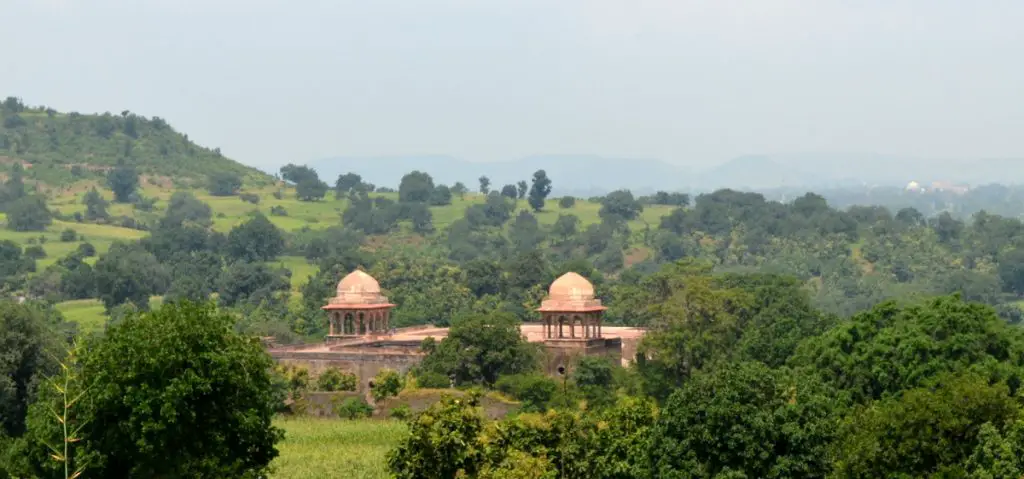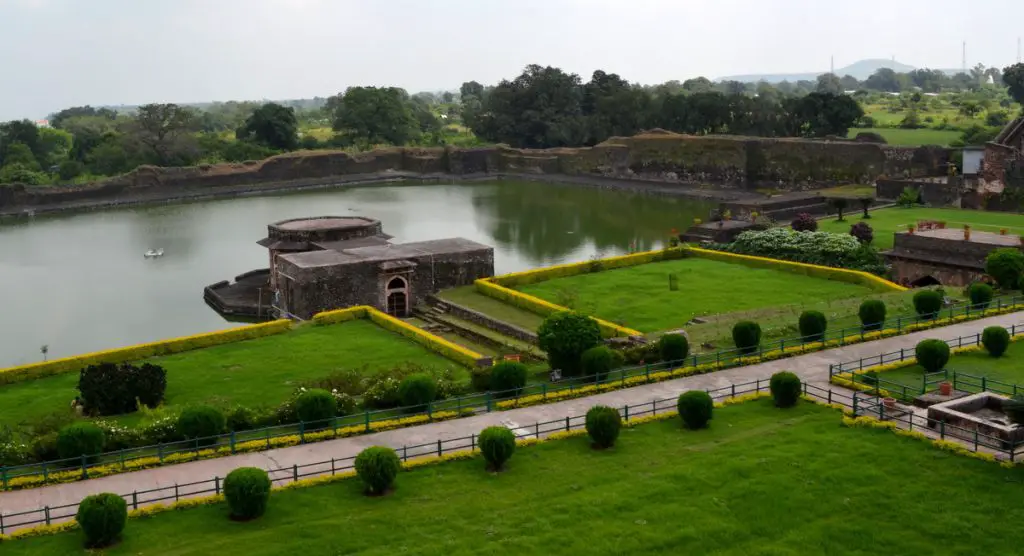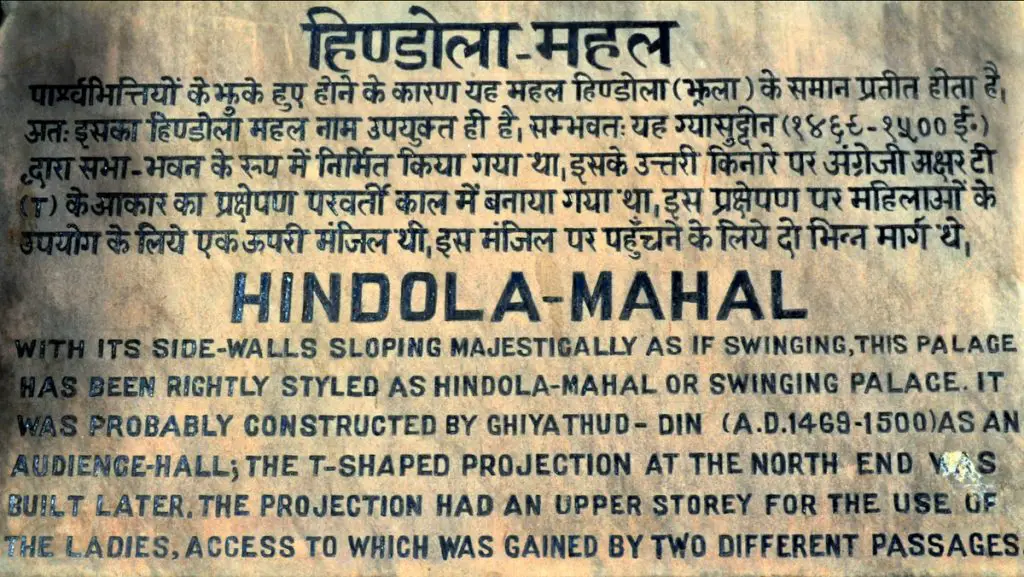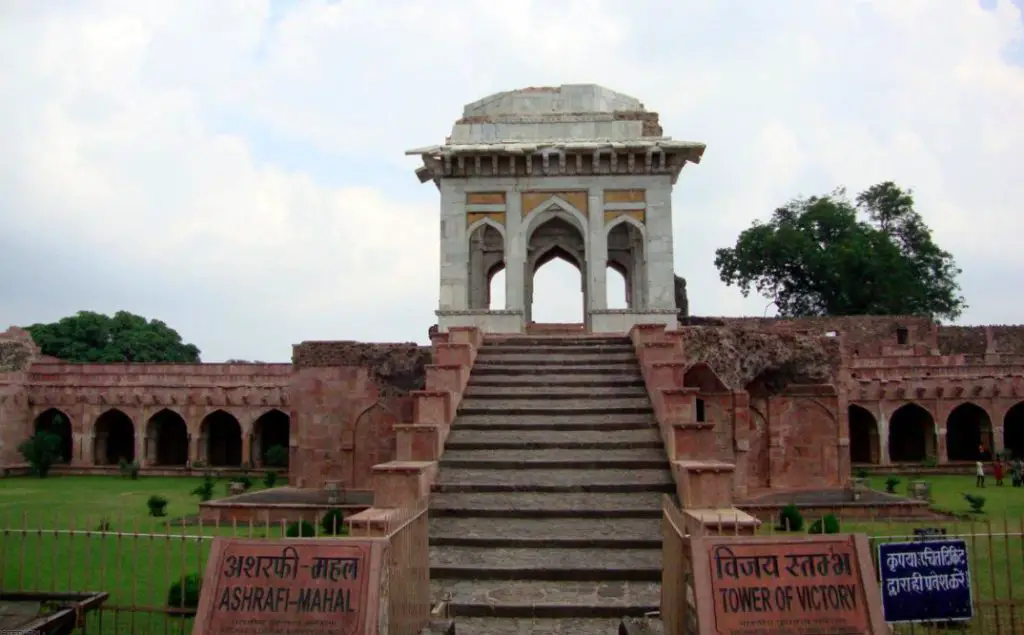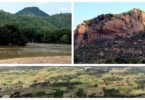Last Updated on 14 August 2023 by Poorna & Brinda
Mandu mesmerises you. It is magical. Especially if you are there after monsoon. Like we were.
We visited Mandu during our 15 days long road trip in central India in 2010. We stayed in lovely Jhira Bagh palace in Dhar. The palace being on the highway and on the outskirts of Dhar helped. We did not have to go through the town.
The road from palace to Mandu fort is surprisingly good as this is the route taken by tourists coming from Indore. After fifteen KMs we see a sort of picnic spot with some local boys hanging around. We could see a huge gorge. We ask a boy about the place and he says it is called “SUSIDE POINT”!!
We get down to see what it is all about. To our surprise, we see fantastic valley and a nice waterfall. Brinda gets out of the car and get her Nikon. The valley looks beautiful and the gorge really deep. There isn’t much of water in the falls – must be a beautiful sight when it rains – but still look charming. We can now understand why the locals call this SUSIDE POINT!!
Please click on the pictures to see them in larger size.
Valley view @ Suside point!
The waterfalls
Mandu or MANDAVA as it was known in medieval times was the largest fortified city in the country. Mandu is a huge, crumbling collection of old buildings from the 15th and 16th centuries. It is situated on the top of a large, flat Malwa plateau, surrounded on all sides by steep slopes.
Poorna had gone there after rains in 1986 while being posted in MHOW in Madhya Pradesh. Mandu is fairy-tale like after rains. Greenery is soothing and with broken fort walls, gates and palaces thrown in between, it gives a magical look.
Without giving too much of history – which one can get from Wiki – the place today is well preserved by Archaeological survey of India. In fact, ASI has published an excellent monograph on the place. One can comfortably spend a day exploring the various monuments. The place still retains its rustic rural charm and is not crowded unlike many of our monuments.
We take a guide as soon as we reach the fort. Though the fort is well signed, we always feel it is good to have a guide with you so that we don’t have to struggle for directions. Also important is to set the expectation clear to guides on how much time you can spare to see the place. Guides are garrulous and we need to keep a check on them!
Our first stop is at the Echo point. There are two buildings opposite to each other very far from the road at the edge of the hill. Echo Point is named so because, echo can be heard in the second building!
The mausoleum @ the Echo point
You stand on the road at a designated point and shout. It gets echoed in the building on the right!! We shout and it works….like the way it does in Golgumbaz in Bijapur. More than the echo part, we loved the setting of these mausoleums in the middle of greenery.
We drive along the road watching many ruins at a distance. Then we see the vast expanse of water set amidst greenery – Sagar Talab. The good monsoon has filled the tank to the brim. It looks lovely. We could see some honeymooning couples paddling away in the waters!!
Serene waters of Sagar Talab or Sagar Lake
Rani Roopmati mahal look imposing from a distance. Built on the highest point in Mandu, with “Open to sky cupolas” it has excellent views of the valley in all directions. Rani Roopmati, the consort of Baz Bahadur lived here and balladeers of Malwa have many stories of romance between them. It is a simple construction with cupolas in the corners.
Rani Roopmati mahal from a distance
The cupolas of the mahal
The eastern cupola
Passage ways inside the pavilion
Water tank. It is interesting to see the way water storage systems were designed in Mandu.
The view from the mahal
The palace of Baz Bahadur as seen from Rani Roopmati Mahal
We get down and drive to Baz Bahadur palace. The palace in its heydays must be grand but what remains now looks simple and nice. There is a central pool and one can see steps leading to water from all sides.
This is the place from where Baz bahadur used to conduct his activities. There is courtyard inside the palace which were used for song and dance programmes. Large rooms in the palace were meant for private concerts.
Arches at the entrance
The pond in the palace.
Private chambers
Our next stop is “Jahaz Mahal”, the palace built like a ship floating in water! On the way, we stop at Rewa Kund, a small waterbody which used to supply water to Roopmati mahal.
We reach Jahaz Mahal. The first sight of the place is magical! With the water bodies full, you feel as if the Mahal is floating in the water. Built in the design of a huge ship, with water bodies around it, this is the “Main attraction” of Mandu. You have to give it to our kings and queens of yesteryear for their amazing vision in building these structures. Building in the middle of water bodies naturally kept the palace cool in the scorching summer heat. Check out the pictures.
The side elevation of Jahaz Mahal. Look at the way the staircase is designed as if one is walking up to a deck of a ship!
Front elevation of Jahaz Mahal
The other side
A tortoise shaped bathing tank inside the palace
One of the towers with the water body in the background.
Water storage tank
Munja Talab or Munja tank as seen from the top of Jahaz Mahal
Jal Mahal palace in ruins as seen from Jahaz Mahal. But one can visualise the beauty of this palace surrounded by water bodies.
We walk to Hindola Mahal which is another fascinating building. Built like a swing, it was the palace for queens.
We drive to Jamia Masjid which is a beautiful building built in red stone. Modelled on the great mosque of Istanbul, it is an elegant piece of architecture.
We miss out Hoshang Shah’s tomb and make a quick round of Ashrafi Mahal or Tower of victory.
Another interesting story we hear from the guide is that the sultan used to make his fat queens walk up the Mahal many times every day to make them slim. Since the steps of the Mahal are slightly inclined, they had to put in extra effort which made them sweat. Interesting story indeed by our guide. So, the original “Stepper” we all use in Gyms was invented in Mandu!!!
As we get into the car, we notice these huge fruits not seen anywhere before. We ask the guide what it is. He says it is “Mandu Imli” or “Mandu Tamarind” found in the forests around Mandu!! We dare not experiment with it.
We now bid good bye to Mandu Fort though there are many more monuments to see. We now head to Maheshwar on a road which goes on the edge of the hill providing us beautiful vistas of the valley. Please check out the pictures below.
It was a day well spent. Mandu is a lovely getawy one can expeince in Central India away from the hustle bustle of crowded cities.
Travel Information
- Reaching there
- By Air – Indore is the nearest airport at a distance of 100 KMs. Hire a taxi to reach Mandu.
- By train – Indore is well connected to different parts of the country.
- By Bus – Indore is well connected with other parts of Madhya Pradesh. Overnight bus services is available to Mumbai and Bhopal.
- Stay Options
- Madhya Pradesh Tourism’s Malwa resort is a good option to stay inside the fort. Jhira Bagh Palace in Dhar is an excellnt option. There are few private hotels in Mandu.
- Mandu can be done as a day trip from Indore comfortably.
- Hire a good guide to explore Mandu. It is very helpful.
-
The Mandu fort and monuments inside are open from Dawn to Dusk. All monuments can be reached by car.
- The Sagar Talab has boating facility for those who are interested.
- Mandu is best in Monsoon or immediately after monsoon.
- The valleys in Mandu must be having some trekking trails. One can contact the forest department of Madhya Pradesh for details.
Please Share
We hope you like this post on magical Mandu. May we request you to share it with your friends by clicking the buttons on the side bar.













